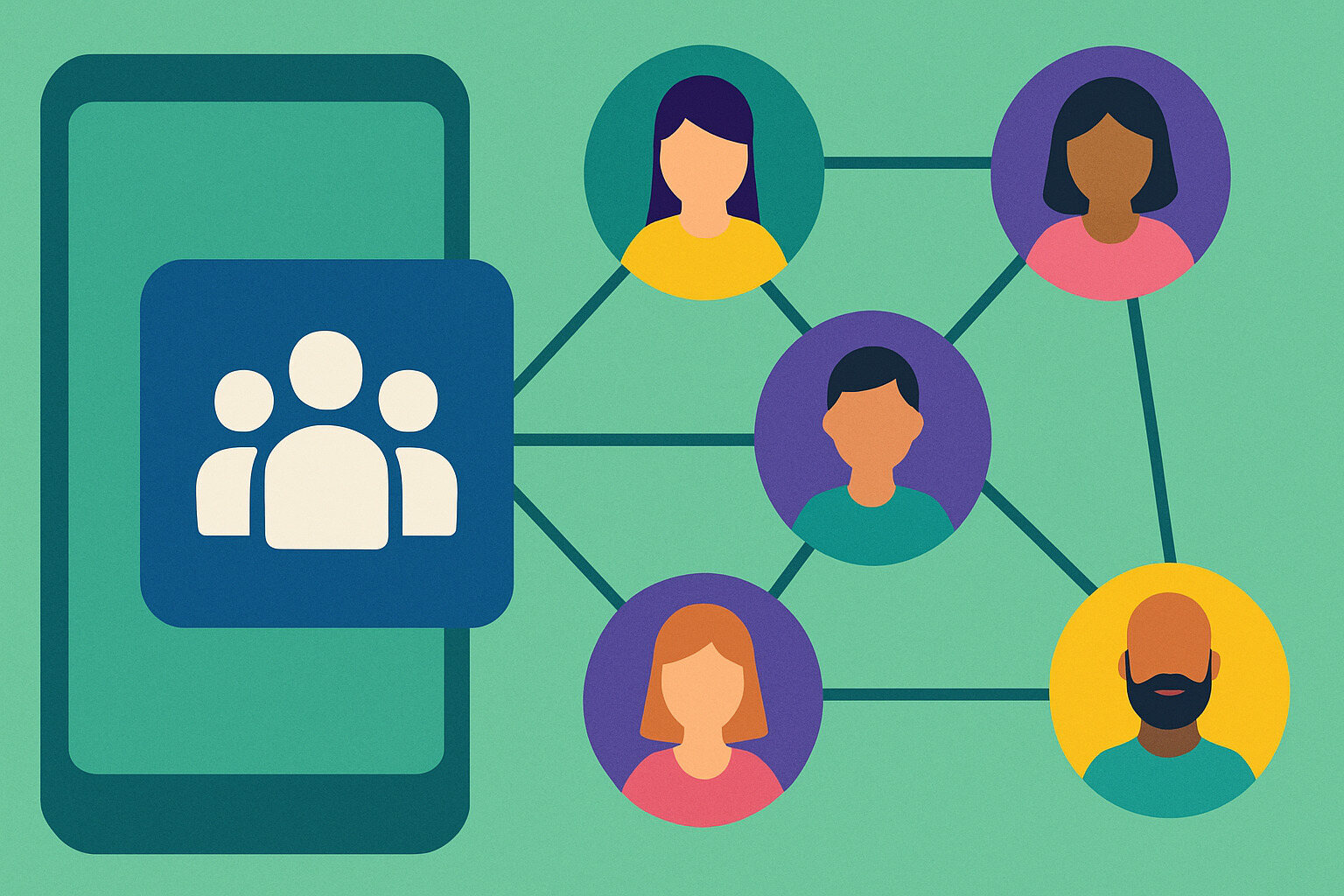Building Closer Relationships Through Groups
Many businesses focus on sales, but not all pay attention to the relationship with customers after the transaction. This is where Facebook Groups come in—as a bridge for ongoing connection. Instead of a one-time interaction, a longer relationship is formed through continuous conversations, support, and participation.
A Facebook Group provides a space where customers can ask questions, share experiences, or offer suggestions. In this way, they feel like part of a community—not just a buyer. This sense of belonging not only fosters loyalty but also contributes to stronger organic reach as members engage and interact more meaningfully with the brand.
On social media, engagement matters. But its impact is deeper when the connection has meaning. These groups are not just for announcements; they’re spaces for collaboration, resulting in stronger customer loyalty.
More Personal Interactions with Customers
On a Facebook Page, interaction is limited. Communication is usually one-way. But in a group, every member has the opportunity to speak and be heard. The spotlight isn’t just on the brand—customers have a voice and a place too.
Admins or moderators have the chance to engage on a more personal level. A simple reply to a question or a quick check-in shows care. With every comment, trust grows as customers see the brand is genuinely listening.
There are stories of small businesses that grew not because of ads but through active group participation. One handmade soap brand built a loyal customer base after starting a group where they shared skincare tips. From casual discussions, members turned into regular customers.
Providing Value Beyond the Product
Customers aren’t always looking to buy something. Sometimes, they just want ideas, inspiration, or someone to talk to about shared interests. Facebook Groups are perfect for this. Instead of constant sales pitches, brands can share knowledge and relatable experiences.
For example, if a brand sells cooking tools, they can post recipes or kitchen hacks in the group. It’s not just about the product—it’s about the experience that comes with using it. This type of content is easier for customers to appreciate.
When a group provides helpful content, members are more likely to return. And each return deepens the relationship. Over time, it becomes easier for the brand to reintroduce products at the right moment.
Easier Access to Feedback
It’s not always easy to get feedback through a brand page. But in a group, because the atmosphere feels more personal, members are more open to sharing their thoughts. This is incredibly valuable for improving services or products.
A poll or simple question like “Which color would you prefer for the next batch?” isn’t just a fun activity—it’s direct guidance from actual users. And when customers feel their opinions are heard and valued, their trust strengthens.
One clothing brand got ideas for a new collection just by noticing comment trends in their group. They didn’t need external research—the community told them what they wanted. In this way, the customer becomes not just a buyer, but part of the decision-making process.
Offering Exclusive Access to Members
One reason people stay in a group is the feeling of exclusivity. In a Facebook Group, you can offer early access to new products, exclusive content, or simply show appreciation to active members.
These perks don’t have to be huge. A shout-out, a discount code, or a sneak peek at a new design can be enough. When members feel like they’re “first in line,” it strengthens their attachment to the brand.
A tech accessories shop created a beta group for users of a new product. They released the prototype exclusively in the group and received key feedback there. The result: a more refined final release and a more loyal customer base.
Building Community Through Storytelling
A group is not just a place for Q&A—it’s also a space for stories. When members share their experiences, stronger connections are formed—among members and with the brand.
If the brand focuses on fitness gear, a member can share their progress journey. If it’s a skincare niche, users can post their “before and after” stories. Each story highlights not just the product, but the emotions tied to it.
Storytelling is human nature. When a group creates a safe, supportive space for it, members naturally become more active. Not because they’re forced to—but because they genuinely want to be part of the community’s story.
Addressing Customer Concerns More Effectively
Despite good relationships, issues still arise. In such cases, a group becomes a fast channel for assistance. The quicker the response, the quicker the resolution.
In an active Facebook Group, it’s often not just the admin who answers—other members pitch in with tips from their own experiences. This forms a support system that doesn’t rely solely on emails or customer service hotlines.
When concerns are resolved quickly and compassionately, they become positive experiences in the eyes of the customer. What starts as a complaint can become a testament to the brand’s excellent care.
Encouraging UGC (User-Generated Content)
User-generated content is a powerful asset for any brand. One of the most effective ways to foster it is through an active group. When members feel trusted and confident, they naturally start posting their own content.
From product photos to testimonial videos, this content is organic—not paid, not forced. And when it comes from a group, engagement is higher because the whole community supports it.
One pet product brand received hundreds of product photos from their group. They used them for social media, ads, and their website—all from real users. The result? A brand image that felt more authentic and relatable.
Expanding Reach Organically
Facebook Groups offer more visibility to members than regular pages. Posts are seen more often, notifications are frequent, and there’s a higher chance of comments or reactions.
You don’t need to spend on ads right away to get noticed. In an active group, reach comes naturally, and interaction feels more genuine. Every post, comment, or poll strengthens the connection. It’s not just about likes—it’s about relationships.
Members often invite friends too. This way, the community grows on its own. And because the invitation came from someone they know, new members are more likely to trust the group—and the brand behind it.
Building Trust Through Every Comment and Connection
Facebook Groups are more than just platforms. They’re bridges for authentic connection, feedback, support, and shared stories. With every question answered and every post acknowledged, trust is built—and that trust strengthens the brand over time.
When a group is managed with care, it grows naturally. Not because of a marketing push, but because of real relationships. And on social media, a genuine connection is more powerful than any campaign.











No responses yet